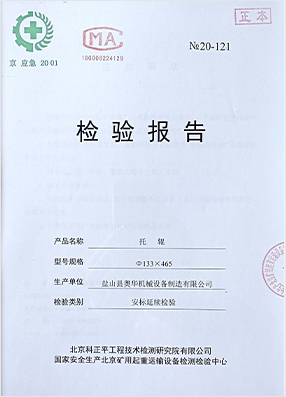 Afrikaans
Afrikaans  Albanian
Albanian  Amharic
Amharic  Arabic
Arabic  Armenian
Armenian  Azerbaijani
Azerbaijani  Basque
Basque  Belarusian
Belarusian  Bengali
Bengali  Bosnian
Bosnian  Bulgarian
Bulgarian  Catalan
Catalan  Cebuano
Cebuano  Corsican
Corsican  Croatian
Croatian  Czech
Czech  Danish
Danish  Dutch
Dutch  English
English  Esperanto
Esperanto  Estonian
Estonian  Finnish
Finnish  French
French  Frisian
Frisian  Galician
Galician  Georgian
Georgian  German
German  Greek
Greek  Gujarati
Gujarati  Haitian Creole
Haitian Creole  hausa
hausa  hawaiian
hawaiian  Hebrew
Hebrew  Hindi
Hindi  Miao
Miao  Hungarian
Hungarian  Icelandic
Icelandic  igbo
igbo  Indonesian
Indonesian  irish
irish  Italian
Italian  Japanese
Japanese  Javanese
Javanese  Kannada
Kannada  kazakh
kazakh  Khmer
Khmer  Rwandese
Rwandese  Korean
Korean  Kurdish
Kurdish  Kyrgyz
Kyrgyz  Lao
Lao  Latin
Latin  Latvian
Latvian  Lithuanian
Lithuanian  Luxembourgish
Luxembourgish  Macedonian
Macedonian  Malgashi
Malgashi  Malay
Malay  Malayalam
Malayalam  Maltese
Maltese  Maori
Maori  Marathi
Marathi  Mongolian
Mongolian  Myanmar
Myanmar  Nepali
Nepali  Norwegian
Norwegian  Norwegian
Norwegian  Occitan
Occitan  Pashto
Pashto  Persian
Persian  Polish
Polish  Portuguese
Portuguese  Punjabi
Punjabi  Romanian
Romanian  Russian
Russian  Samoan
Samoan  Scottish Gaelic
Scottish Gaelic  Serbian
Serbian  Sesotho
Sesotho  Shona
Shona  Sindhi
Sindhi  Sinhala
Sinhala  Slovak
Slovak  Slovenian
Slovenian  Somali
Somali  Spanish
Spanish  Sundanese
Sundanese  Swahili
Swahili  Swedish
Swedish  Tagalog
Tagalog  Tajik
Tajik  Tamil
Tamil  Tatar
Tatar  Telugu
Telugu  Thai
Thai  Turkish
Turkish  Turkmen
Turkmen  Ukrainian
Ukrainian  Urdu
Urdu  Uighur
Uighur  Uzbek
Uzbek  Vietnamese
Vietnamese  Welsh
Welsh  Bantu
Bantu  Yiddish
Yiddish  Yoruba
Yoruba  Zulu
Zulu conveyor rollers and idlers
Understanding Conveyor Rollers and Idlers Key Components in Material Handling
Conveyor systems are integral to modern industrial operations, facilitating the efficient movement of materials across various environments. Two essential components of these systems are conveyor rollers and idlers, which play a vital role in ensuring smooth and effective material transport.
What are Conveyor Rollers?
Conveyor rollers are cylindrical components that support the weight of the material as it moves along the conveyor belt. These rollers are typically made of high-strength materials such as steel or plastic and are designed to withstand significant loads and resist wear over time. They come in various designs, including smooth, grooved, and crowned rollers, each serving specific purposes based on the material being transported and the design of the conveyor system.
Smooth rollers allow for easy movement of materials, while grooved rollers help secure items in place, preventing side-to-side movement during transportation. Crowned rollers are designed to keep the conveyor belt centered, guiding it to remain aligned and minimizing belt wear and slippage.
Idlers The Unsung Heroes
conveyor rollers and idlers

While rollers facilitate movement, idlers are crucial for maintaining the stability and tension of the conveyor belt. Idlers are the stationary supports positioned beneath the conveyor belt, allowing it to traverse smoothly. There are different types of idlers, including trough idlers, return idlers, and impact idlers, each serving unique functions.
Trough idlers are designed to create a 'trough' shape in the conveyor belt, which helps contain the materials being transported. This design is particularly useful for transporting bulk materials, as it prevents spillage and enhances load stability. Return idlers support the belt on its return journey, ensuring that it remains taut and aligned. Impact idlers are specifically designed to absorb the shock of heavy loads as they are dumped onto the belt, protecting it from damage.
The Importance of Maintenance
Proper maintenance of conveyor rollers and idlers is essential for optimal performance and longevity. Regular inspections can prevent issues such as misalignment, excessive wear, and material build-up, which can lead to costly downtime and repairs. Lubrication of rollers and inspection of idlers for wear and tear are simple yet effective maintenance practices that can extend the life of these components.
In conclusion, conveyor rollers and idlers are critical components of conveyor systems that significantly impact efficiency and productivity in material handling. Understanding their functions and ensuring regular maintenance can lead to improved operational performance and reduced costs in industrial settings. As industries continue to evolve, the importance of these components in facilitating seamless operations cannot be overstated.
-
Revolutionizing Conveyor Reliability with Advanced Rubber Lagging PulleysNewsJul.22,2025
-
Powering Precision and Durability with Expert Manufacturers of Conveyor ComponentsNewsJul.22,2025
-
Optimizing Conveyor Systems with Advanced Conveyor AccessoriesNewsJul.22,2025
-
Maximize Conveyor Efficiency with Quality Conveyor Idler PulleysNewsJul.22,2025
-
Future-Proof Your Conveyor System with High-Performance Polyurethane RollerNewsJul.22,2025
-
Driving Efficiency Forward with Quality Idlers and RollersNewsJul.22,2025





























